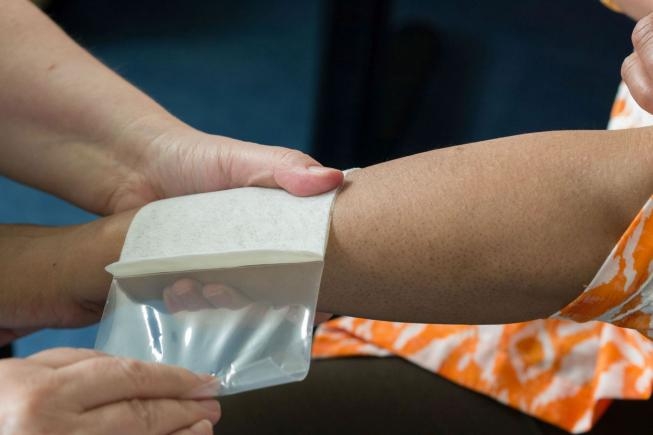Patients suffering from burn injuries, skin ulcers and bed sores can find relief using unique jelly-like materials — hydrogels — that are playing an increasingly vital role in the healing process of such wounds. Nuclear technology has been crucial in developing hydrogels that form an important part of treating wounds in many low and middle income countries including?Egypt.
The exceptional gel bandage is fast becoming ubiquitous to 'cool' wounds and reduce the?painful effects of burns and other injuries. The wounds of diabetic patients have healed much faster and better than with traditional bandages, said El-Sayed A. Hegazy, Professor Emeritus and former Chairman of the National Centre for Radiation Research and Technology (NCRRT) of Egypt, the only facility in the country to develop hydrogels.
“Hydrogel has a very pleasant effect and relieves pain. It reduces the degree of tissue damage caused by the injury, and is transparent, so the doctor can monitor the wound. It reduces the time of recovery by half, but the most important effect is that it helps in the regeneration of new skin, which is scar-free,” he explained.
The use of nuclear techniques in industry will be the theme of this year’s Scientific Forum?in Vienna, 15-16 September. The topics covered will also include radiation technologies used for cross-linking processes of materials that also benefits the health sector.
Nuclear derived hydrogels are safe for humans
The science behind making hydrogels is complex but well understood, said Ghada Adel Mahmoud, professor of radiation chemistry at the Centre. “Hydrogels are formed using polymer chains that are crossed-linked and sterilized using gamma radiation or electron beams,” he said. The polymers are mixed in water, put into moulds or tubes, packaged, sealed and then cross-linked and sterilized by exposure to radiation. This results in the polymers connecting to form a gel. The gel formed is strong, pliable and transparent.
Hydrogels for wound dressing contain 70–95 per cent water and are biocompatible, added Agnes Safrany, radiation chemist at the?IAEA.They do not stick to the wound; they keep the wound moist for recovery, absorb the excreta and are also easy to store and use, she said.
Hydrogels also play a crucial role in delivering medication to the right place in the human body without causing harm elsewhere. They are used as a barrier applied to oral medications to either protect the stomach mucosa from gastric irritant drugs or to protect acid-labile drugs from the harsh environment of the stomach. There is further ongoing research in this area, explained Mahmoud.
Researchers are considering using nano-hydrogels for chemotherapy treatment as well, because they go directly through the blood stream to the tumour without having an impact on the rest of the body, she said.
Advanced nuclear applications benefit the health sector
The IAEA has supported a number of countries through specific tailor-made projects to raise awareness, train scientists and technicians to develop hydrogels using nuclear technology. “Egypt is a beneficiary of such assistance. An electron beam unit at the NCRRT is currently being upgraded to meet the growing demand for hydrogel production,” said Hegazy.
The nuclear techniques used to create hydrogels have been around for over 30 years and their production is simple and cost-effective, said Mahmoud.
Egypt is a beneficiary of IAEA assistance. An electron beam unit at the National Centre for Radiation Research and Technology is currently being upgraded to meet the growing demand for hydrogel production.




